Sci-Tech
Realme 13 Pro+ Review: All In on the Cameras

If there is one brand that has been on a roll in 2024, it is Realme. The company has launched smartphones in almost every segment to increase its market share and dominance. Keeping with the trend, Realme is again back with the 13 series, which aims to take the camera experience to the next level. However, you might recall that the Realme 12 series also launched in 2024. Well, the company has now adopted a half-year refresh cycle for its number series. Nevertheless, the question remains: has Realme delivered an all-around phone, or has it sacrificed in other aspects? I had the chance to test out the phone for a couple of weeks, so let’s look at it in my review of the Realme 13 Pro Plus.
Realme 13 Pro+ Review
Summary
The Realme 13 Pro Plus is a style statement with its stunning design inspired by Monet. While the performance could be better, the excellent cameras more than make up for it, making the device a compelling option.
Realme 13 Pro+ Review: Design & Hardware
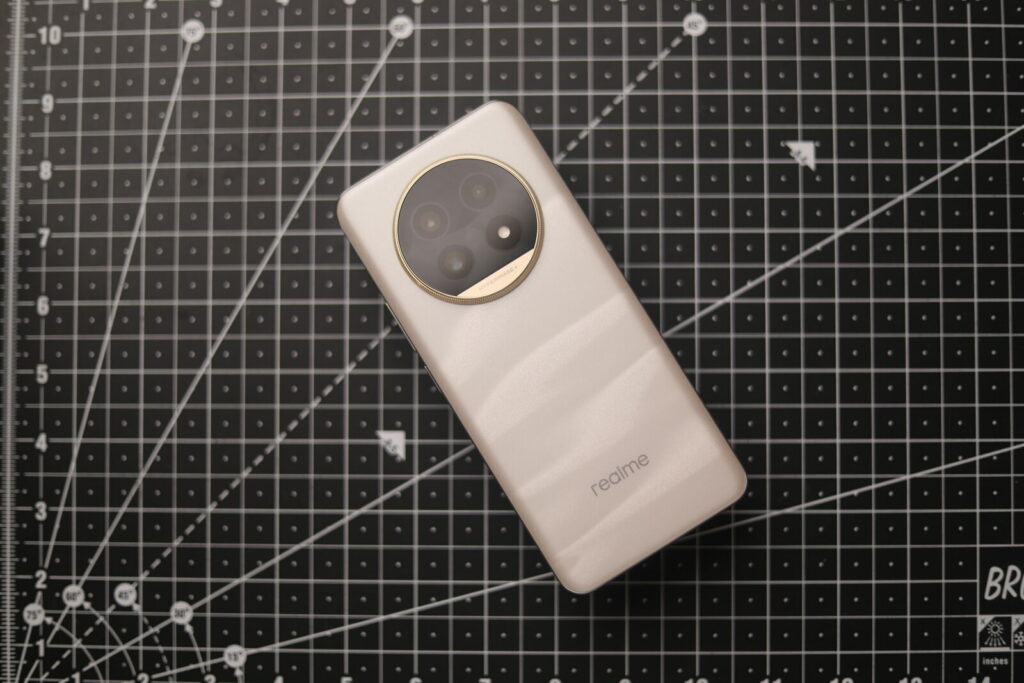
If there is one thing Realme has learned from its parent company, Oppo, it is how to master design. Inspired by Monet’s Haystack paintings, the Realme 13 Pro Plus features a gorgeous textured back glass panel that is sure to start conversations. The horizontal patterns catch the light from different angles, creating a wave-like texture. I showed the phone to a few colleagues, and they all loved the back design.
But that’s not all. The company has continued its Rolex-inspired camera module design, which complements the back design and makes the 13 Pro Plus stand out from the sea of generic-looking phones.
While the sides match the back design, they are unfortunately made of plastic, thus compromising durability. I accidentally dropped the phone from my bedside table without a case and dented the side frame. Therefore, I recommend that anyone purchasing this phone keep it in a case.
Realme 13 Pro+ Review: Display
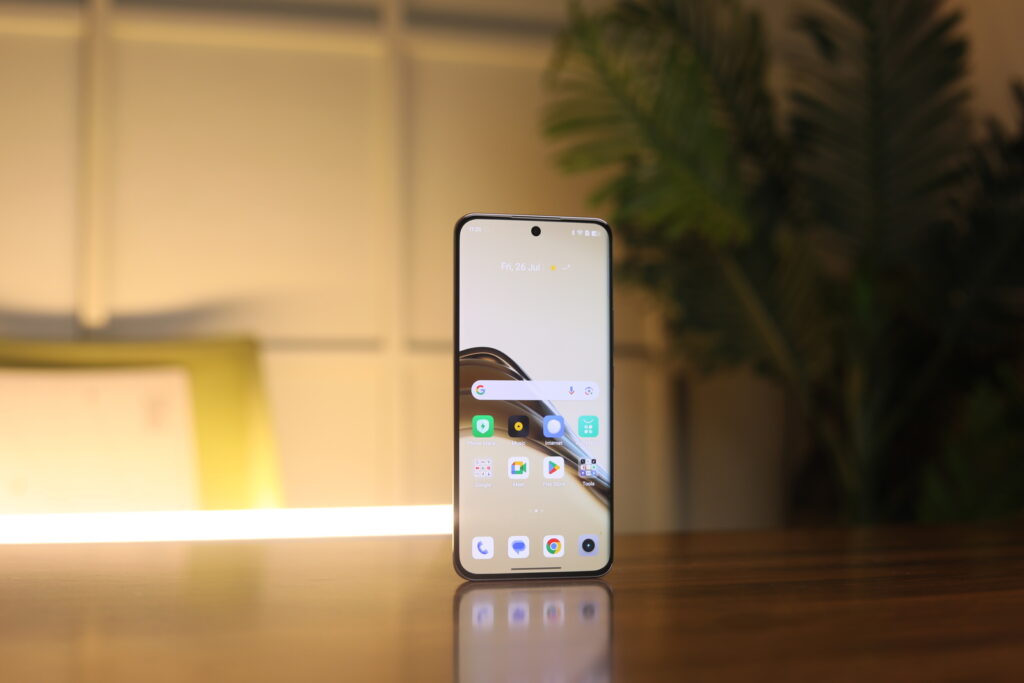
The Realme 13 Pro Plus features a curved 6.7-inch FHD+ AMOLED 120Hz display with a local peak brightness of 2,000 nits. The device reaches up to 1,200 nits in outdoor scenarios, making it easily visible in direct sunlight. The panel is impressive, with punchy colors, good dynamic range, and sharpness, making it an excellent option for people who watch movies on the go. Moreover, the device comes with Widevine L1 support out of the box.
If you’ve read my reviews of other Realme smartphones, you might recall that the company has struggled with managing refresh rates on its devices. Unfortunately, the same issue persists with the Realme 13 Pro Plus. It isn’t as bad as on past Realme phones, but the handset doesn’t run at its full 120Hz in most third-party apps. For example, Chrome and Gmail run at 90Hz, YouTube at 60Hz, and Google at 60Hz in search results, which then switches to 90Hz when opening a page.
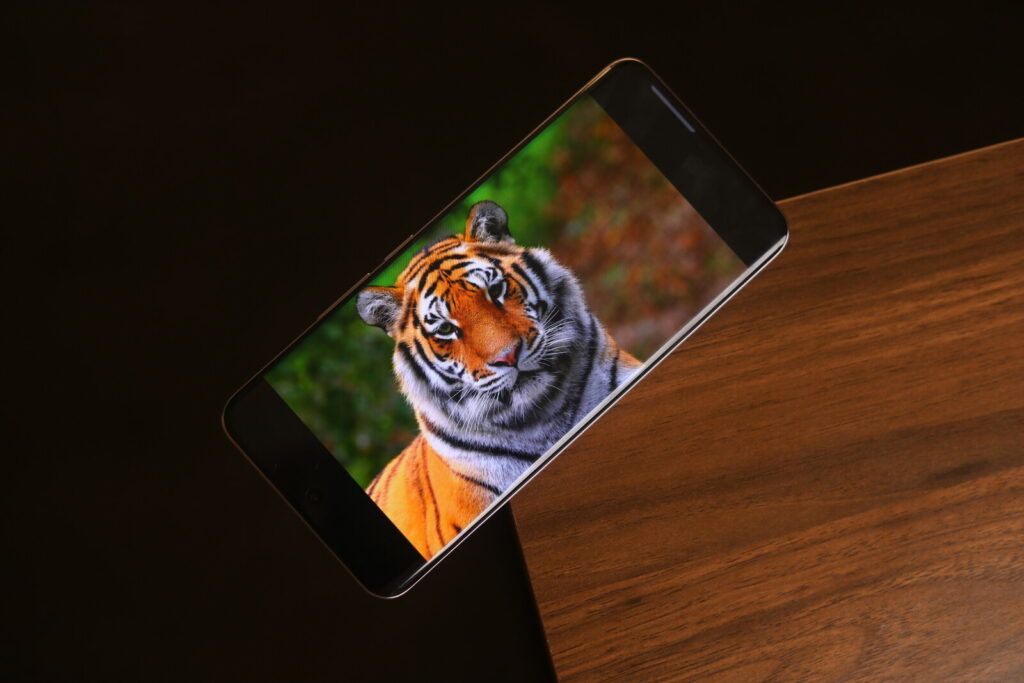
The Realme 13 Pro Plus also does not support HDR playback on YouTube, which was a surprising discovery. However, this could be a bug, and I have communicated this issue to the Realme team, who are working on a fix.
Finally, the device comes with the new Corning Gorilla Glass 7i for display protection, which held up well in my testing. As mentioned earlier, I dropped the phone, which dented the frame. Meanwhile, the display remained spotless with no scratches.
Realme 13 Pro+ Review: Performance
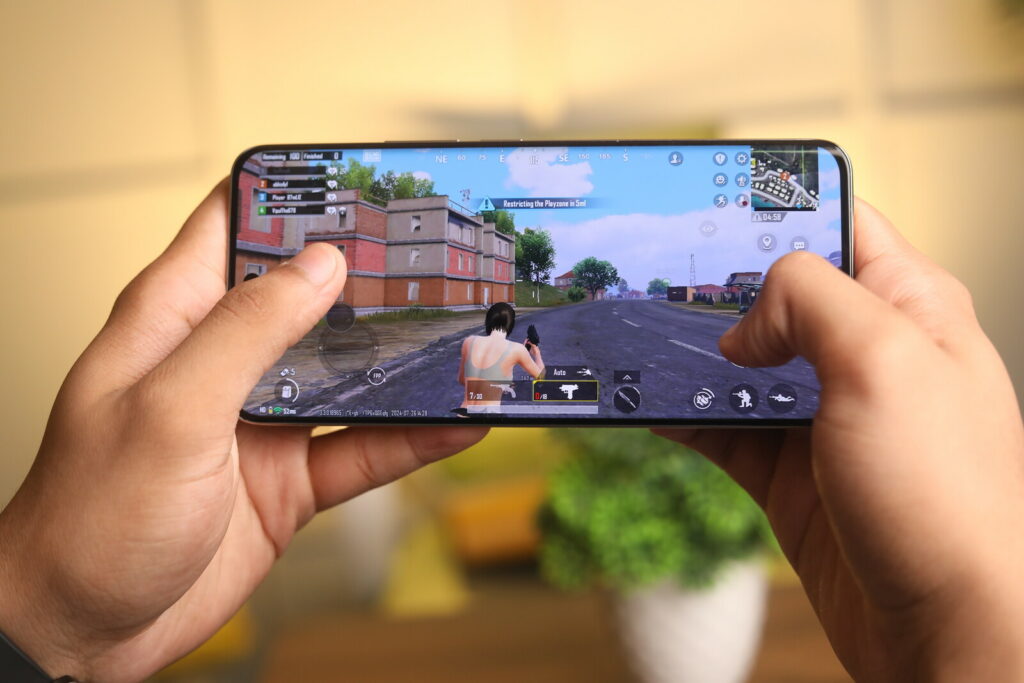
The Realme 13 Pro Plus houses the midrange Qualcomm Snapdragon 7s Gen 2 chip, which includes four Cortex-A78 cores running at 2.4GHz and four Cortex-A55 cores running at 1.95GHz, along with the Adreno 710 GPU. The device also comes with up to 12GB of LPDDR4X RAM and 512GB of UFS 3.1 storage. The phone handles everyday tasks pretty well, whether scrolling through social media, watching videos, or taking camera samples. I noticed no slowdowns, hiccups, or jitters.
I also tested the benchmark performance of the Realme 13 Pro Plus, and the results were interesting. In Geekbench, the device scored 946 and 2809 in the single-core and multi-core tests, respectively. In the AnTuTu benchmark, the device scored 684386, putting it on par with other devices in the segment. However, in the infamous 30-minute 30-thread throttle test, the 13 Pro Plus struggled and throttled toe 76% of its peak performance.


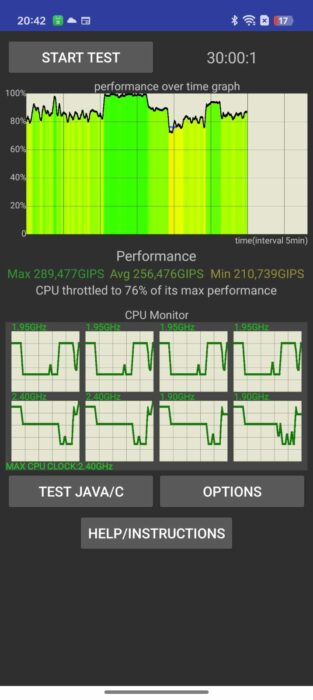
Considering the throttle issues, my expectations for gaming were low. However, in the “HD” and “Extreme” settings in BGMI, the gameplay was smooth, with no dropped frames.
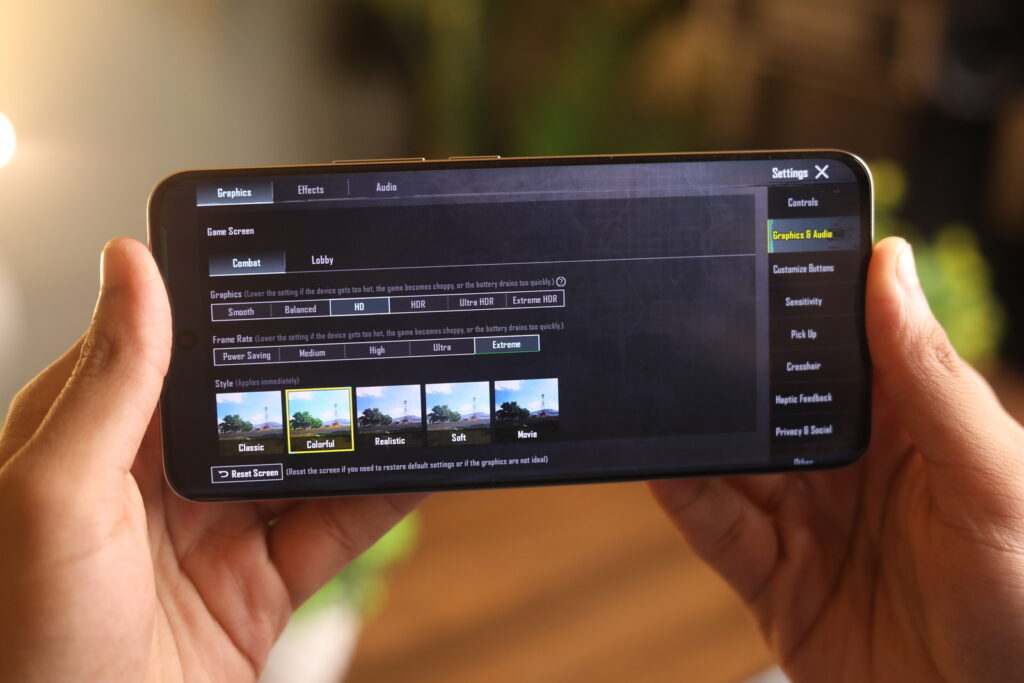
Battery Life
With a massive 5,200mAh battery, the Realme 13 Pro Plus easily lasted through an entire day of testing, which consisted of taking camera samples, playing BGMI, and watching videos. To put things into perspective, you can expect around 7-8 hours of screen-on time (SOT) if your day consists of everything I discussed. When the battery eventually runs out, the included 80W charger can recharge the phone from 0% to 100% in under 50 minutes.
Realme 13 Pro+ Review: Cameras
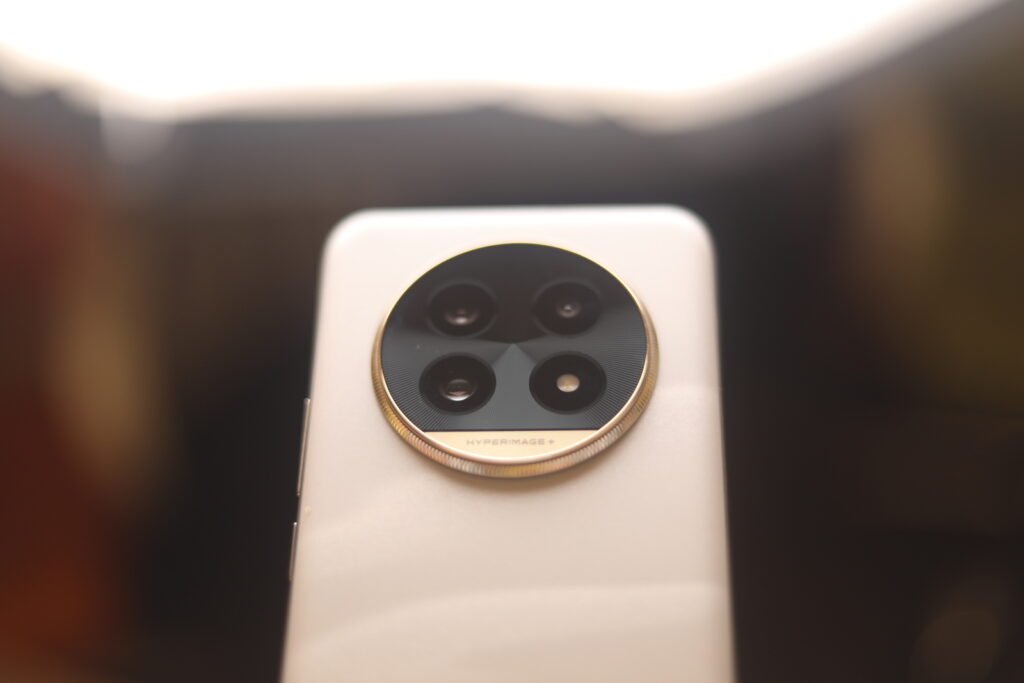
If you watched Realme’s launch event, you wouldn’t have missed the emphasis on the 13 Pro Plus’s cameras. But before we proceed, the device features a 50MP Sony LYT-701 primary camera sensor with OIS support, another 50MP 3x Sony LYT-600 periscope lens with OIS support, and an 8MP UltraWide lens.
Starting with daylight photos, Realme’s focus on HyperImage+ processing has paid off, as the shots have a natural tone without being too punchy. The sharpness was top-notch, and the phone surprisingly handled harsh lighting conditions pretty well.






It’s safe to say that portrait shots look best on a telephoto lens, and this holds true with the 13 Pro Plus. The photos were aesthetically pleasing, with natural bokeh and good edge detection. While the quality does drop in low-light scenarios, the shots are still usable.



Zoom and UltraWide shots
Regarding zoom shots, the 3x telephoto lens on the Realme 13 Pro Plus captures excellent photos with colors that don’t deviate much from the primary camera. The sensor can zoom up to 120x, though this is more of a marketing gimmick. Realistically, you can zoom in up to 7x-8x and get detailed shots.



The 8MP UltraWide lens, on the other hand, captures decent photos in optimal lighting, but the quality deteriorates significantly in indoor and nighttime conditions.
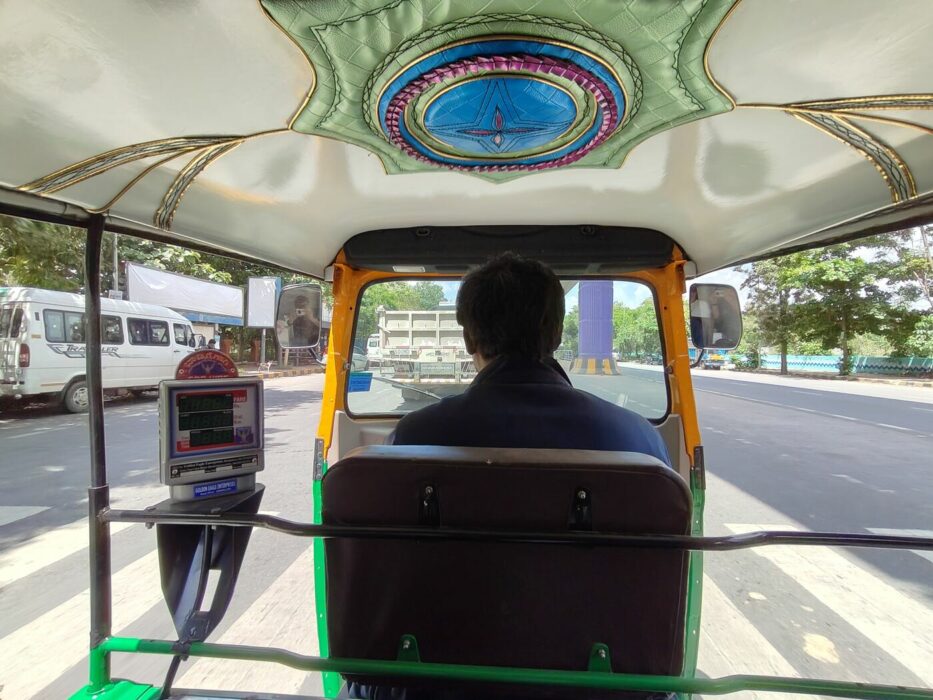
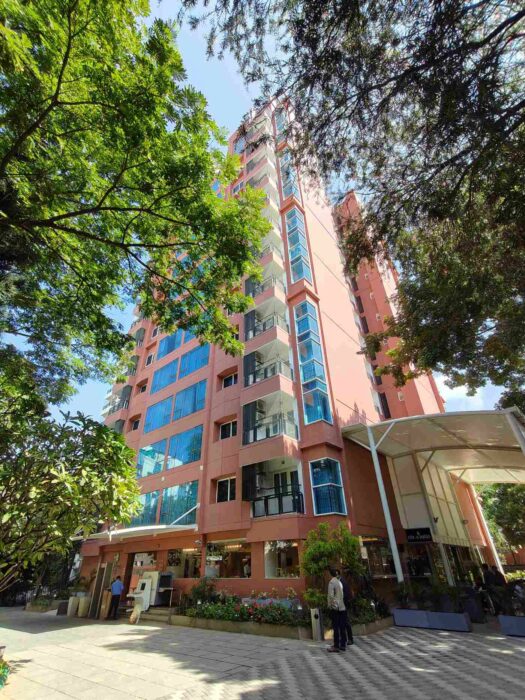
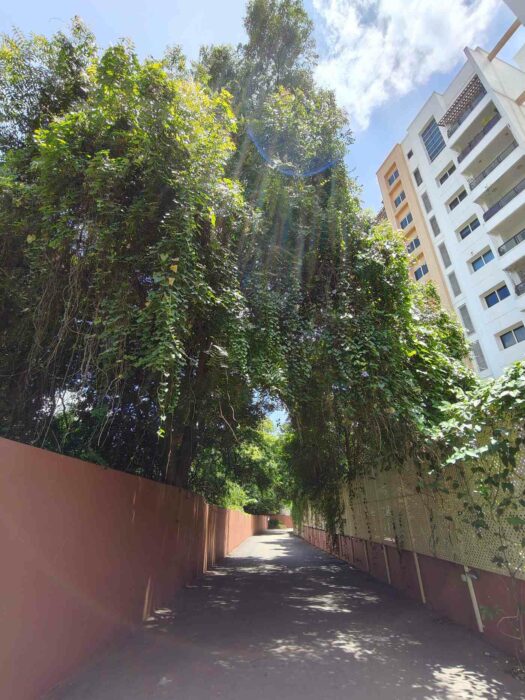
Nighttime shots
Given the new Sony sensor, I had high expectations for the 13 Pro Plus, and it didn’t disappoint. It captured well-lit shots with good color reproduction and details. While some grain is visible when zooming in, Realme has provided a fix with the AI Ultra Clarity feature (more on that below).



Selfies and Videos
The 32MP selfie shooter impressed me by capturing detailed selfies with natural skin tones in outdoor and indoor scenarios. However, in low light, the shots were soft and lacked detail.



In the video department, the Realme 13 Pro Plus can capture up to 4K@30fps, which is disappointing considering the company’s focus on cameras. Nevertheless, the videos were pretty good, with ample details and stabilization.
Realme 13 Pro+ Review: AI Features & Software

Realme talked greatly about the AI features on the 13 Pro Plus, including AI Smart Removal, AI Ultra Clarity, and AI Group Photo Enhance. Of these, I found AI Smart Removal to be the most effective at removing objects from photos. While it struggles with complex backgrounds, it is a handy tool for cleaning up small or even big objects.


The AI Ultra Clarity feature claims to add more clarity and appeal to photos. In testing, it usually brightened the photo and adjusted sharpness, which proved to be very helpful in cleaning up old photos. Similarly, AI Group Photo Enhance aims to clear faces in pictures and brighten up low-light images.
Regarding the software experience, the 13 Pro Plus runs on Android 14 out of the box, with Realme UI 5.0 on top. The company has promised two years of major software updates and three years of security patches.
As mentioned, the UI is smooth, with no lags or stutters. However, there is a lot of bloatware, including Snapchat, Spotify, and Netflix. Additionally, the device features the infamous “Hot Apps” folder, which displays ads for various apps you are unlikely to install.
Should you buy the Realme 13 Pro+?

Starting at Rs. 29,999 including offers, the Realme 13 Pro Plus is ideal for those whose main priorities are camera quality and design. While the performance could be better, the cameras more than compensate for this limitation. As a result, the device gets a solid thumbs up from me.
Sci-Tech
Cristiano Ronaldo first to hit 1bn social media followers

Cristiano Ronaldo has hit 1bn total followers across his various social media accounts – making him the first person to reach that mind-boggling figure.
The number is calculated by combining his total number of followers across Instagram, Facebook, Twitter, YouTube, and Chinese social media sites Weibo and Kuaishou.
It does not equate to one billion individual followers, as many people will follow him across multiple platforms, and some will be fake accounts, known as bots.
Nonetheless social media expert Paolo Pescatore, from PP Foresight, described it as a “staggering number” that media and brands would pay close attention to.
“What an achievement, and it further underlines the fundamental shift taking place in media.”
It showed “the power to reach new, younger audiences thanks to technology”, he told the BBC.
On the pitch, Ronaldo was famed for his rivalry with Argentinian star Lionel Messi.
But off it, there is no competition for who is winning the social media contest – Messi has a mere 623 million followers.
Some of the other celebrities with the biggest presence on social media are:
- 690m: Selena Gomez, actor/singer
- 607m: Justin Bieber, singer
- 574m: Taylor Swift, singer
Other notable names the BBC looked into include The Rock (557m), Kylie Jenner (551m ) and Ariana Grande (508m).
MrBeast, the top YouTuber in the world, has 543m total followers, while WWE, often considered to have an enormous social media presence, can only point to reaching a quarter of the audience of Cristiano Ronaldo with 268m combined followers.
The footballer will have reached this milestone thanks to his decision to join YouTube last month, where his channel rocketed to 50 million subscribers within a single week.
So far, the channel consists mainly of conversations between Ronaldo and his wife Georgina Rodríguez, as well as his former Manchester United colleague Rio Ferdinand.
He announced the news in a post shared across his various social media platforms.
Cristiano Ronaldo has made a career out of breaking records.
His successes include being top scorer in Uefa Champions League history, having the most goals in the European Championship, and making more international appearances than anyone else.
Last week he became the first footballer to score 900 top-level career goals.
As with his playing career, he still has scope to improve his numbers on social media too, as unlike some of his rivals, he is not on TikTok or Threads.
All of which is likely to add to another figure he dominates: earnings.
According to Forbes, his total earnings now stand at $260 million – the highest of any athlete.
Sci-Tech
Musk and Zuckerberg have ‘polluted culture’

Meta boss Mark Zuckerberg and X owner Elon Musk are “the worst polluters in human history”, Stephen Fry has said.
The actor and comedian made the claim during a lecture at Kings College, London.
“You and your children cannot breathe the air or swim in the waters of our culture without breathing in the toxic particulates and stinking effluvia that belch and pour unchecked from their companies into the currents of our world,” he said of the pair.
The BBC has approached the two men’s companies for comment.
Mr Fry has a track record of being an early adopter of technology – and was once a regular poster on X, when it was known as Twitter.
He stopped posting in 2022, a few months after the platform was purchased by Mr Musk, but has retained his account. He is no longer active on any social networks.
“I’m the chump who thought social media could change the world,” he told his audience at the Digital Futures Institute.
He said he was at first enthusiastic about the potential of social media to unite people around the world and bring about positive change in society, citing the Arab Spring protests which were coordinated online as an example – but added that he had been proved wrong.
He described what he considered to be a fatal flaw in attempts by early Facebook algorithms to “maximise engagement”, saying nobody had predicted that engagement would be “most maximised by… the worst passions” such as anger, shock and horror.
“We are decidedly hopeless at knowing where technology will take us or what it will do to us,” he said.
He returned to the theme several times throughout his one hour speech, in which he also considered the future of artificial intelligence.
Mr Fry argued that AI was “poised to disrupt every space we have”.
He said he hoped corporate greed would not corrupt the development of AI tech at the expense of safety.
“The best I can do is this – Einstein and Russell said in their manifesto on nuclear weapons – we appeal as human beings to human beings, remember your humanity and forget the rest,” he said.
Mr Fry’s broadside was not the only attack on Mr Musk.
Earlier on Thursday, senior Meta executive Sir Nick Clegg, talking at Chatham House, in London, had been similarly scathing of Mr Musk’s platform X.
The former deputy prime minister called it “a tiny, elite, news-obsessed, politics-obsessed app” and added that in his view the social network had become “a one-man hyper-partisan hobby horse.”
In March 2024 X claimed to have 550 million monthly visitors. Facebook has just over 3bn.
Additional reporting by Liv McMahon
Sci-Tech
Vodafone clashes with UK’s competition watchdog over Three merger

Vodafone and Three have rejected claims by the UK’s competition watchdog that their proposed merger would lead to higher prices for millions of mobile users.
The Competition and Markets Authority (CMA) has “provisionally concluded” the deal would weaken competition between mobile networks.
It has particular concerns that customers who are least able to afford mobile services would be most affected.
The findings are the latest from the CMA’s ongoing probe into the merger, which it launched in January.
The regulator will now consult on its findings and potential solutions to its worries over competition.
These solutions could include legally binding investment commitments, and measures to protect both retail and wholesale customers.
Vodafone’s CEO for European Markets, Ahmed Essam, told the Today programme, on BBC Radio 4, that he still believed the merger would make a better network for customers, and add to the competition in the market.
“We’ve made a significant commitment to an £11bn investment,” he said.
“We’re willing to make sure that this is legally binding, and we undertake a commitment to deploy this.”
He also said the firm had already traded part of its radio spectrum with a competitor.
But the CMA said it is “not convinced” that it would be good for consumers.
“The main knockback to the merging parties is that the CMA considers claims of superior network quality post integration to be “overstated”,” said Kester Mann from analysis firm CCS Insight.
But he said the regulator was not shutting the door on the deal.
“Vodafone and Three should be encouraged by the tone of the CMA’s report, which appears more open to the merger than I was expecting.”
But Rocio Concha, director of policy and advocacy at consumer group Which?, took a different view.
“The regulator’s finding has set a high bar for the merger to proceed,” she said.
“It is clear from those findings that the planned merger between Vodafone and Three could have a negative impact on millions of consumers.”
But she warned it would be “challenging” for the regulator to find remedies for its concerns.
Vodafone and Three revealed plans to merge their UK-based operations in June last year, creating the biggest mobile network in the UK with around 27 million customers.
But the CMA provisionally concluded on Wednesday that such a deal would lead to a “substantial lessening in competition”.
In addition to worries over price and service levels, the regulator is also concerned that the deal may make it more difficult for smaller players such as Lyca Mobile, Sky Mobile and Lebara – who rent space from the bigger operators – to get a good deal.
Vodafone and Three have said the tie-up would lead to an additional investment of £11bn in the UK.
The CMA found that a merger of the two could improve the quality of mobile networks and accelerate next generation 5G networks and services, as claimed by the companies.
But it considered these claims were “overstated”, and that the merged firm would not necessarily have the incentive to carry out planned investment after the merger.
In a statement, Vodafone and Three said they disagreed with the CMA’s findings.
“By all measures, the merger is pro-growth, pro-customer and pro-competition. It can, and should, be approved by the CMA,” they said.
The CMA will issue a final report into the deal in December.
The firms added they would be working with the regulator to secure approval for the tie-up.
-

 African History5 years ago
African History5 years agoA Closer Look: Afro-Mexicans 🇲🇽
-

 African History8 months ago
African History8 months agoBlack History Facts I had to Learn on My Own pt.6 📜
-

 African History5 years ago
African History5 years agoA Closer Look: Afro-Mexicans 🇲🇽
-

 African History1 year ago
African History1 year agoMajor African Tribes taken away during the Atlantic Slave Trade🌍 #slavetrade #africanamericanhistory
-

 African History1 year ago
African History1 year agoCameroon 🇨🇲 World Cup History (1962-2022) #football #realmadrid #shorts
-

 African History1 year ago
African History1 year agoWhat did Columbus Find in 1493? 🤯🔥🔥 #history #civilization #mesoamerica #africa #kemet
-

 African History8 months ago
African History8 months agoBlack History Inventors: Mary Kenner 🩸
-

 African History1 year ago
African History1 year agoOrigin Of ‘Cameroon’ 🇨🇲😳#africa
































